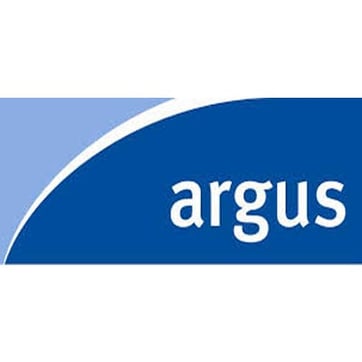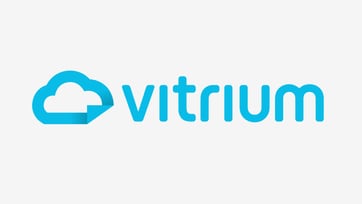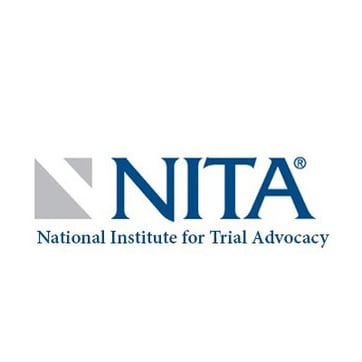One of the leading UK business intelligence publishers selects Vitrium Security to protect revenue generating content. Here's why they use Vitrium DRM.
Protect Your Valuable Market Research Information with a Digital Rights Management Solution

Anyone working in the market research or data intelligence industry knows just how valuable the research products you create are. When you’re responsible for the revenue related to these products, controlled access to this content is critical to your bottom line. With that in mind, you should consider bringing a digital rights management (DRM) solution into your business.
From the documents such as market research reports, data intelligence reports and price sheets you develop, to the video content and even podcasts that companies like yours might publish and/or sell to your customers or via eCommerce sites or subscription services, you need a way to protect and control that intellectual property.
What is Digital Rights Management (DRM)?
To put it in simple terms, digital rights management is a method or process to control and/or restrict the distribution, modification, and use of copyrighted content or intellectual property (IP), whether it’s in the form of documents, images, graphics, video, or audio. This type of IP is worth its weight in gold and is often a source of revenue to authors, publishers, singers, producers, content creators, and content distributors.
There are digital rights management (DRM) technologies, solutions, and software that can be put in place to protect and control that IP and that valuable, hard-earned work you or your organization has put into it. It can also be used to protect your revenue streams, without limiting the reach to your paid customers or subscribers.
Why Does a Market Research Company Need a DRM Solution?
You need to be able to share your reports, however, you don’t want the recipients or subscribers to have unfettered access. Below are some examples of how using a DRM solution can be beneficial in your market research company.
Controlled Content Distribution: More Revenue in Your Pocket
Assume for a moment your company is releasing a report on the latest trends in low-risk investments for the New Year. Financial advisors and wealth management companies want access to this information to get an idea of the best places to park their clients’ money to maximize results for the client, and profitability for their investment companies. What's to stop Bob from ABC Wealth Management in New York from sharing it with his business associates in London, who don’t work for ABC Wealth Management?
If your market research company doesn’t have digital rights management controls and protocols in place, Bob can easily email a copy of the report to his associates. Now, instead of your company receiving payment from two customers, you’re only getting one payment. Think it’s no big deal? Let’s take it a step further.
Even in the B2B world, we're in an era of social media and online sharing. Bob's business associate in London, Nigel then posts the report to his LinkedIn profile as it has some very insightful details which the UK media then get access to and re-share to their social media handles. Before you know it, a single report that cost ABC Wealth Management $5,000 has been spread around freely to the entire UK market and quite frankly, a broader market thanks to the ease of sharing through social media. The market research company loses out on a tremendous amount of revenue due to the inability to control where that report was shared.
Seamless Access for Clients: No Plug-ins or Apps Required
One of the biggest problems with some DRM solutions is that they require downloading new apps and browser extensions to access content. Many organizations have corporate IT policies that do not allow for plug-ins or apps to be installed on computers, and it's a hassle to do so, especially if you are sending your company’s content out regularly and bringing on new clients all the time. The need for downloads and plug-ins not only frustrates the customer, but it can also result in an uptick in customer service and troubleshooting issues. Your company might not have the time and resources required to address these issues, and it shouldn’t have to.
When you use a good DRM solution, you don’t have to worry about that because it can be used on its own with a secure portal for clients to log into, or the technology can be integrated with the systems that market research firms are already using. For example, your own website that your clients log into, a content management system, an eCommerce system, or a subscription platform.
Offering Free Trials and Limited Access is a Breeze
If your market research company offers free trials or needs to limit the amount of time someone has to view documents, you’ll want the ability to easily set expiration dates. A good digital rights management software will make this as easy as toggling a box within their settings.
Perhaps there isn’t a need for a limit on time, but instead, you want to prevent anyone from printing or copying anything from the document. Or maybe you don’t want your users to be able to share the document. Again, you’ll need the right DRM solution for this.
Remember Nigel from London we mentioned earlier who shared the low-risk investment report on LinkedIn? If you remove the ability to download, print and copy, you’ll also want to set a device limit which further prevents people from being able to share your work, thereby restricting access to the people who actually paid to view it.
While Nigel might not have intended any harm by sharing the information, the simple fact is by copying and pasting or by uploading your documents to social media, he inadvertently prevented your company from earning the additional revenue it deserves. To make matters worse, if someone else shares your intellectual property without properly crediting your company, you are no longer the only expert in your industry. With your organization's revenue, credibility and reputation on the line, it's not only a prudent business decision to bring in a DRM solution, but it's also a fiscally responsible one, one that your executive team and board members should get behind.
Bottom line - Restricting access to your content is necessary, and the process should be easy for you and your customers.
After looking over these potential scenarios, hopefully you’ve realized at least one or two benefits of having a DRM software solution. Once you’ve decided it’s time to use one, the next question is which one should you use?
Enter Vitrium, the most versatile and feature-rich DRM software solution on the market today. Since 2005, we have been providing DRM software and content protection solutions for hundreds of market research and data intelligence companies around the world.
Whether your reports or IP assets are distributed in document, image, video or audio form, Vitrium can help convert this content to a secure but accessible format for your customers, ensuring seamless access for them anywhere, anytime.
Vitrium's Digital Rights Management Solution
When you use Vitrium's DRM software solution your company gains access to:
- Protection of documents, images, video and audio content
- Over 20 different content protection and DRM controls from print & copy controls, dynamic watermarks, and annotation control, to setting expiration dates, device limits, IP address limits and more
- Tracking analytics that will let you know which files are being opened, what videos are being viewed, and even the IP address and which browser was used to access it
- Scalable solution for businesses with only a few reports or videos to organizations with thousands of reports or distribution to thousands of clients
Check out our full list of features here.
Every minute that you’re not using a valuable DRM solution like Vitrium, your company's content is at risk of possible leaks, piracy, and unauthorized sharing. Imagine all the hard work that your research, creative, writing, and publishing teams have put into creating reports and other content that you sell and distribute to your clients?
All those hours and time spent on researching the content, writing the content, editing the content, designing the content, creating the charts or diagrams that go into the content, then publishing that content. What a waste for all that time and money to be spent with just a simple click of the button and someone freely shares that content with people (maybe even thousands of them) who have not paid for the content, who have not subscribed to your service, or who weren't the intended audience for that content.
A DRM solution is needed. And DRM today is not what it used to be. Find out more - request a demo, or click here to contact us about pricing.





